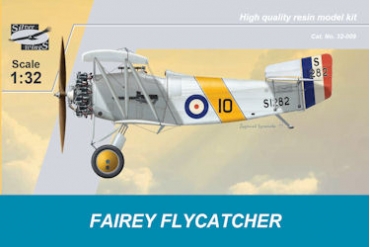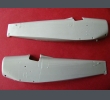Fairey Flycatcher
-
 Box
Box
-
 S1274/527, 401 Flight/801 Squadron, HMS Furious, 1933
S1274/527, 401 Flight/801 Squadron, HMS Furious, 1933
-
 N9679/13, 404 Flight, HMS Courageous, 1929
N9679/13, 404 Flight, HMS Courageous, 1929
-
 S1282/10, 408 Flight, HMS Glorious, 1930
S1282/10, 408 Flight, HMS Glorious, 1930
History
The Fairey Flycatcher was a British single-seat biplane carrier-borne fighter aircraft made by Fairey Aviation which served in the period 1923 to 1934. The Flycatcher was designed to meet the requirements of Specification N6/22 for a carrier and floatplane fighter to replace the Gloster Nightjar. One of the earliest aircraft specifically designed for operation from aircraft carriers, the Flycatcher could take off in under 50 meters! It is probably the most well-known of the Royal Navy’s Interwar fleet fighters, serving for over 10 years on the front line in a variety of colorful markings. The first of three prototype Flycatchers made its maiden flight on 28 November 1922, powered by a Jaguar II engine. Production of the Flycatcher began at Fairey’s Hayes factory in 1923, entering service with No. 402 Flight Fleet Air Arm. The Flycatcher was flown from all the British carriers of its era. Some 192 were produced. A typical deployment was on the aircraft carrier HMS Courageous, where 16 Flycatchers would serve alongside 16 Blackburn Ripons and 16 reconnaissance aircraft. The Flycatcher saw service with the Home, Mediterranean, East Indies and China fleets. During its service on the China station, the Flycatcher was active against Chinese pirates in the waters near Hong.
Technical data:
Length: 7,01 m
Wingspan: 8,84 m
Height: 3,66 m
Wing area: 26,80 m²
Empty weight: 962 kg
Max takeoff weight: 1605 kg
Power plant: Armstrong Siddeley Jaguar III / IV, two row, 14 cylinder radial engine, 400 hp
Max speed: 214 km/h
Range: 499 km
Service ceiling: 5790 m
Armament: 2x fixed forward firing 7,7 mm Vickers machine guns, up to 9,1 kg bombs

































